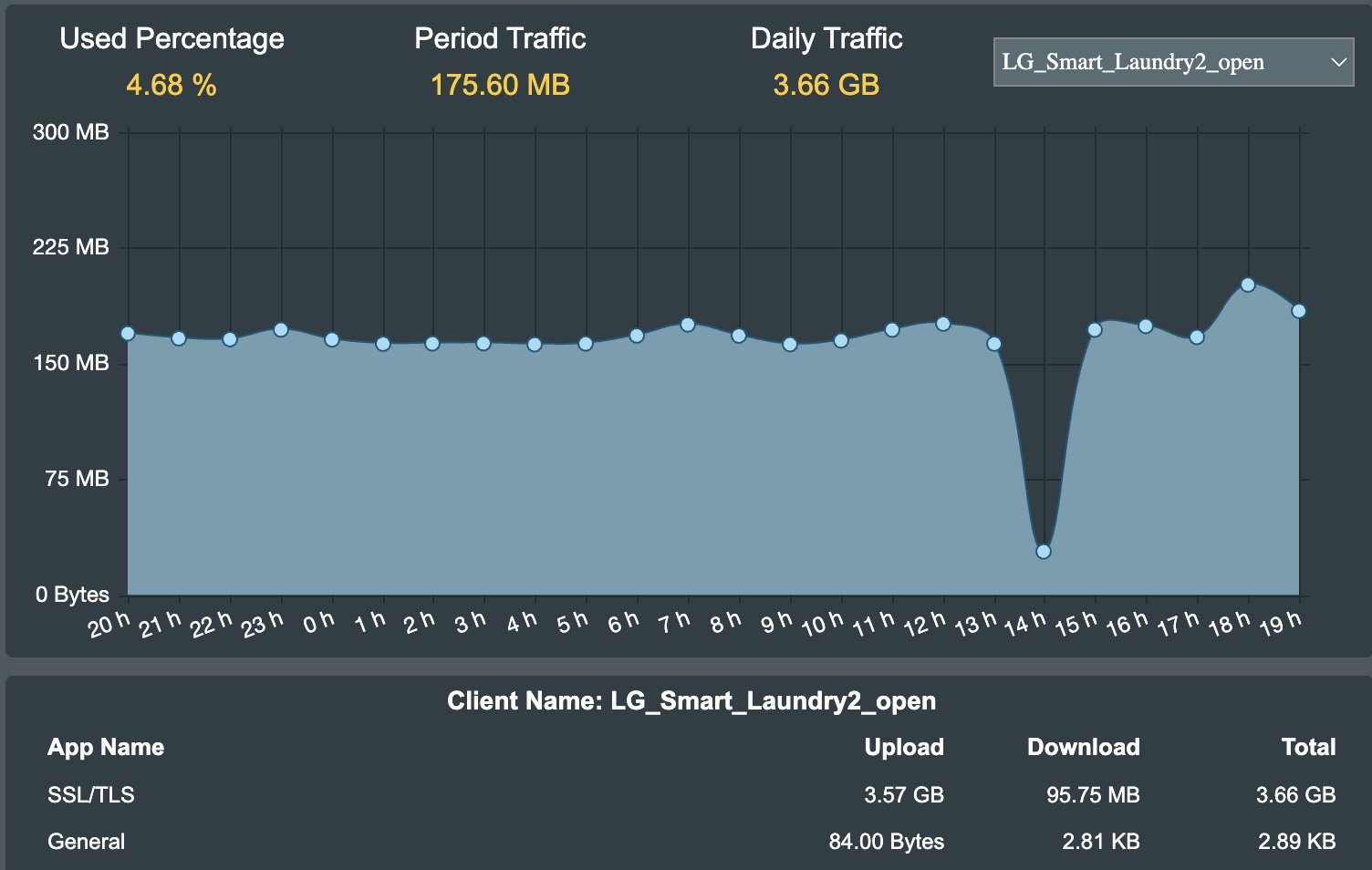AnLGwashing machine owner and self-confessed fintech geek has asked the Twitterverse why his smart home appliance ate an average of 3.66GB of data daily. Concerned about the washer’s internet addiction,Johnieforced the device to go cold turkey and blocked it using his router UI. Had the LG washer been hacked,hijacked, or otherwise tampered with over the net – or is this the average data consumption for a modern smart appliance?
WTF! Why is my LG Washing Machine using 3.6GB of data/day? pic.twitter.com/xQqQicTqxIJanuary 9, 2024

Click ‘See More’ to expand the above Tweet / X.
Social media fans were eager to contribute to the detective work, sniffing out why the LG washing machine might be data-thirsty. Johnie’s initial screenshot showed that on a chosen day, the device uploaded 3.57GB and downloaded about 100MB, and the data traffic was almost constant. Meanwhile, according to theAsus routerinterface screenshot, the washing machine accounted for just shy of 5% of Johnie’s internet traffic daily.
Was the device downloading DLCs or the victim of a hack?
The LG washing machine owner saw the fun in his predicament and joked that the device might useWi-Fifor “DLCs (Downloadable Laundry Cycles).” He wasn’t entirely kidding: The machine does download presets for various types of apparel. However, the lion’s share of the data transferred was uploaded.
Working through the thread, we note that Johnie also pondered the possibility of someone using his washing machine for crypto mining. “I’d gladly rent our LPU (Laundry Processing Unit) by the hour,” he quipped. Again, there was the glimmer of a possibility that there could be truth behind this joke. Another social media user highlighted a history of hackers taking over LG smart-connected appliances. The SmartThinQ home appliancesHomeHack vulnerabilitywas patched several weeks after being made public. A similar modern hack might use the washing machine’s computer resources as part of a botnet. Taking control of an LG washing machine as part of a large botnet forcryptocurrency miningor nefarious networking purposes wouldn’t be as far-fetched as it sounds. Large numbers of relatively low-power devices can be formidable together.

One of the more innocent theories regarding the significant data uploads suggested laundry data was being uploaded to LG so it couldimprove its LLM(Large Laundry Model). It sought to do this to prepare for the launch of its latest “AI washer-dryer combo” atCES, joked Johnie.
An Asus router issue?
For now, it looks like the favored answer to the data mystery is to blame Asus for misreporting it. We may never know what happened with Johnie, who is now running his LG washing machine offline. LG did not immediately reply to a request by Tom’s Hardware for more information.
Get Tom’s Hardware’s best news and in-depth reviews, straight to your inbox.
Another relatively innocent reason for the supposed high volume of uploads could be an error in the Asus router firmware. Ina follow-up posta day after his initial Tweet, Johnie noted “inaccuracy in the ASUS router tool,” with regard to Apple iMessage data use. Other LG smart washing machine users showed device data use from their router UIs. It turns out that these appliances more typically use less than 1MB per day.
The real dangers of connected device hacking
Though Johnie’s Tweets were relatively light-hearted, hacking smart connected devices can be severe. Consider what could happen if medical or industrial IoT devices get taken over by attackers, for example. A case in point is provided by a story from earlier this week when Bosch network-connected wrenches used in factories all around the world were found to beriddled with vulnerabilities.
Researchers highlighted that the cordless industrial wrenches could be hit by exploits or ransomware – with the threat of turning off the wrenches en masse. The wrenches could even be secretly readjusted to make things they were used to construct a danger to their users – through applying incorrect torque. Patches are due soon.
Mark Tyson is a news editor at Tom’s Hardware. He enjoys covering the full breadth of PC tech; from business and semiconductor design to products approaching the edge of reason.